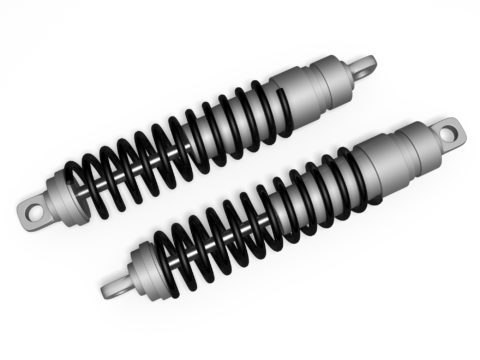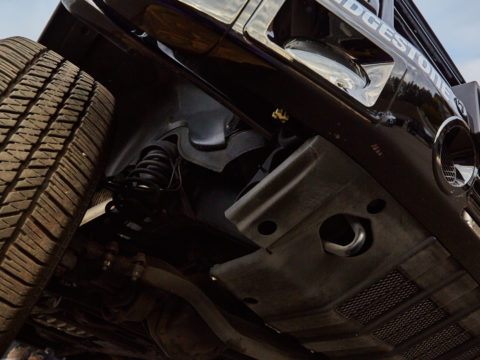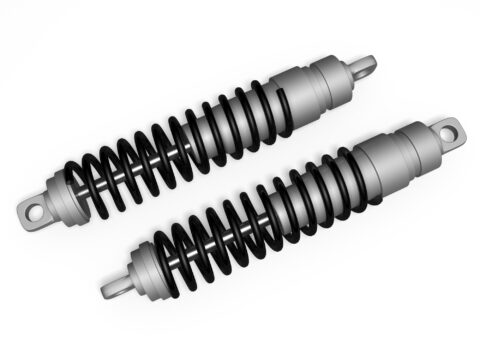Car issues are an annoyance, but acting fast to correct them is always in your best interest.
Some issues, such as ball joints that have worn out, need immediate attention to avoid a potential safety problem.
Know these signs of bad ball joints to act fast when they occur.
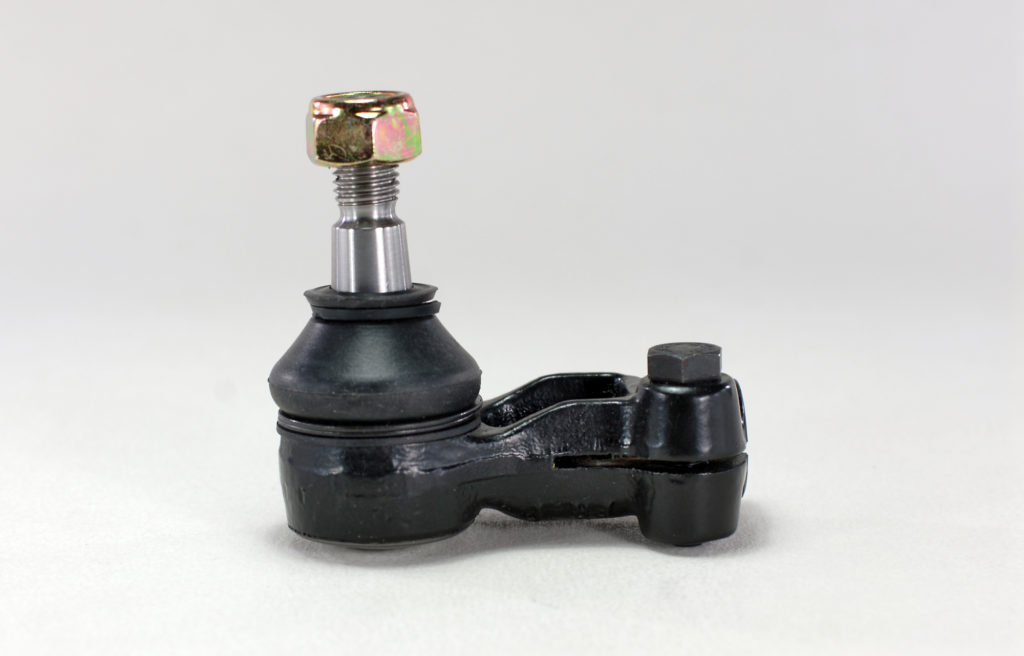
Contents
What Exactly Is the Purpose of a Ball Joint?
Ball joints are a bearing that attaches the control arms and steering knuckles. Most vehicles have ball joints as part of the suspension system.
They look like a ball and socket contained in a protective case or boot. The metal parts need the casing to help protect them from dust and debris, which would cause them to wear down more quickly. The part also contains a lubricant to allow it to move correctly.
The job of a ball joint is to help support the weight of the front of your vehicle and assist with braking and steering. It also helps prevent the front of the car from bouncing.
Ball Joint Diagram
The ball joint looks like a joint on the human body underneath the case. It moves in the same way the elbow on your arm moves.
Where Are Ball Joints Located?
Your car may have two or four ball joints. If your vehicle has shocks and springs, there will be ball joints at the top and bottom on the left and right wheels.
In all other cars, there is just one on each side. They are usually only on the front wheels, but if your vehicle has four-wheel steering, then all wheels will have them.
Common Signs of Bad Ball Joints
Because a bad ball joint could cause serious safety concerns, it is imperative for you to be able to spot the common signs of a bad ball joint.
Symptom 1: Noise
A worn-out ball joint will clunk around because it becomes loose. You may hear clunking or rattling when you hit bumps or turn. It may also squeak when they first start to wear down.
Symptom 2: Vibration
As your ball joints wear out, they can no longer appropriately hold the components together, which results in movement. This movement will result in vibrations in your steering wheel.
Symptom 3: Worn Tires
Bad ball joints will make your tires wear in an uneven manner because they allow the tire to wobble or move out of proper alignment. Usually, you will notice the wear on the extreme outside or inside of the tire.
Symptom 4: Wandering Steering Wheel
Your steering wheel shouldn’t move on its own. You should have to move it. When your alignment is not good, or you have a problem in the suspension, such as bad ball joints, the wheel will drift right or left on its own.
You may also notice your car goes left or right on its own if you do not keep a firm grip on the steering wheel.
Symptom 5: Shaking
If you notice when you are going along higher speeds that your vehicle shakes, this is a sign of suspension damage. You can often trace it back to your ball joints.
RXMechanic explains you may also have excessive shaking when hitting bumps or potholes.
Symptom 6: No Steering Control
If your steering wheel stops working as it should, or you have to exaggerate your moves when turning, you have a big issue. When this occurs, it’s usually an indicator that your ball joints have broken.
Note that this is an advanced symptom. When you have unresponsive steering, your wheel is in a condition where it could break off as you are driving.
Symptom 7: Squeaking
Should you hear squeaking, especially when hitting bumps or potholes, this is an early sign an issue is forming with your ball joints. It tells you the ball joint is lacking proper lubrication. The ball joint can seize up if you ignore it, leading to the wheel coming off your car.
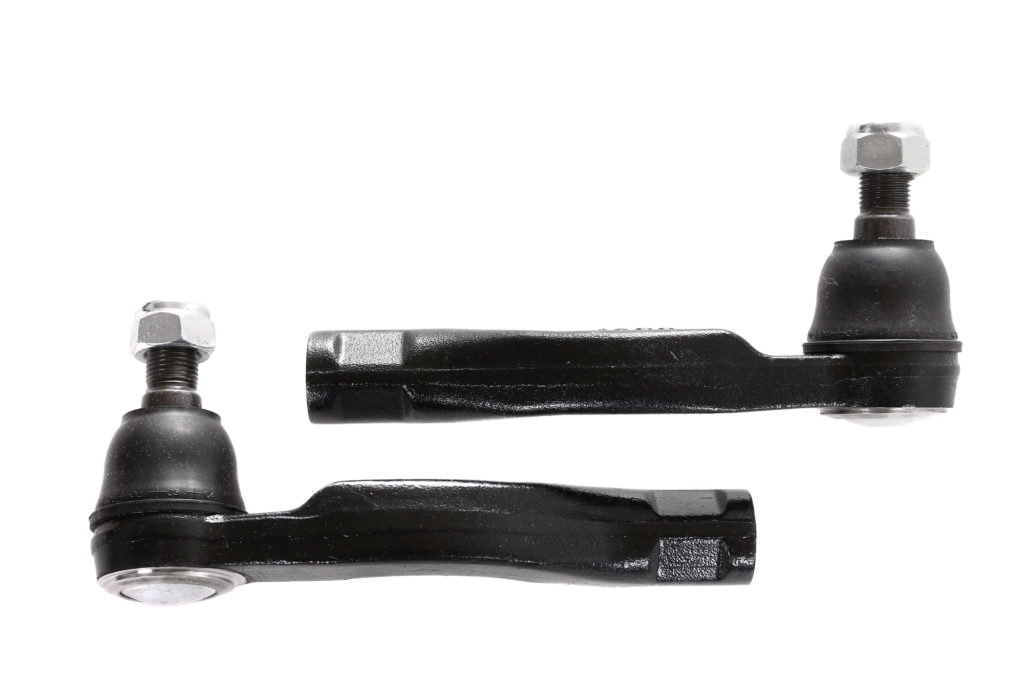
What to Do If You Notice These Symptoms
You should always be on the lookout for symptoms that something is wrong with your vehicle. If you notice any of these bad ball joint symptoms, you should inspect them to see what is going on.
How to Check Ball Joints
You can take your vehicle to a mechanic for an inspection, but if you want to do it yourself, you will need to be able to jack your car up safely. Once in the air, you want to wiggle the tires. Push it back and forth to see if there is movement.
Also, listen for any clinking noises. If you hear clunking, then you know your ball joint is bad.
Look over your tires, too. Uneven wear can tell you that there is an issue. You can also look at the wear indicator on the lower ball joint. If you notice the joint bottom is flat or the joint is not in the proper position, then you probably have a problem.
Acceptable Ball Joint Play
When your joints are in good condition, you should expect little to no play in them. If they are moving around, then you probably need to replace them.
How Long Can You Drive on a Bad Ball Joint?
You should never continue to drive with a bad ball joint. Once you realize there is an issue, you need to get it to a shop or do the repairs yourself. Driving with a bad ball joint can lead to more severe damage and potentially an accident.
The Cost of Replacing Ball Joints
The good news is that replacing a ball joint is not too expensive. You are looking at a couple of hundred dollars if you pay someone to do the work for you and much less if you do it yourself. Trucks or luxury vehicles may cost a few hundred dollars.
Recommended Ball Joint Brands
Do note that you should buy the best quality ball joint replacement you can. If you’re looking to buy a generic model or to find a bargain, this is not the right time for that. In the long run, spending more now will pay off. With that in mind, here are some top brands to consider:
- MOOG Chassis Products
- ACDelco
- Detroit Axle
- Epi
- Synergy Manufacturing
- TeraFlex
- Alloy
- All Balls
- ApplianPar
- Rough Country
Ball Joint FAQs
It is always a good idea to learn as much as you can about the repair your vehicle needs, even if you aren’t doing the work yourself. Here’s a look at some common questions people have about ball joint repair.
Can you replace just the ball joint without replacing the control arm?
One of the reasons most people will replace the control arm when replacing the ball joint is because you have to have a special press to remove the ball joint from the arm.
It is usually quicker and cheaper to just replace the whole thing, but if you have a press, then go ahead and just replace the ball joint.
Do you need a ball joint press to replace ball joints?
In most cases, you will need a ball joint press to replace the ball joint. Even with the tool, it may not always be the most straightforward repair to do. Some vehicles have the joint pressed into the axle or steering knuckle, which complicates things since you cannot bypass the need to press them out by just replacing the control arm, too.
Can you replace just the boot on a ball joint?
The quick answer is no. It is hard to find just the boot for sale. But you can replace just the boot if you can find it. However, be aware that most of what you’ll find will be a universal fit, which is not ideal.
These may not fit right, which can introduce dust and debris inside and lead to other issues.
In most cases, you should just replace the whole part.
How do you tell if it’s a bad wheel bearing or ball joint?
Wheel bearings and ball joints are very similar parts that do similar work. So, the symptoms of failing wheel bearings are often the same as those you’ll notice with a bad ball joint. The easiest way to check is to drive.
With a bad wheel bearing, the noise is much different. It will grumble or whirl when you drive instead of the clunking the ball joint makes. It also won’t really make noise when you hit bumps if the issue is the wheel bearings.

